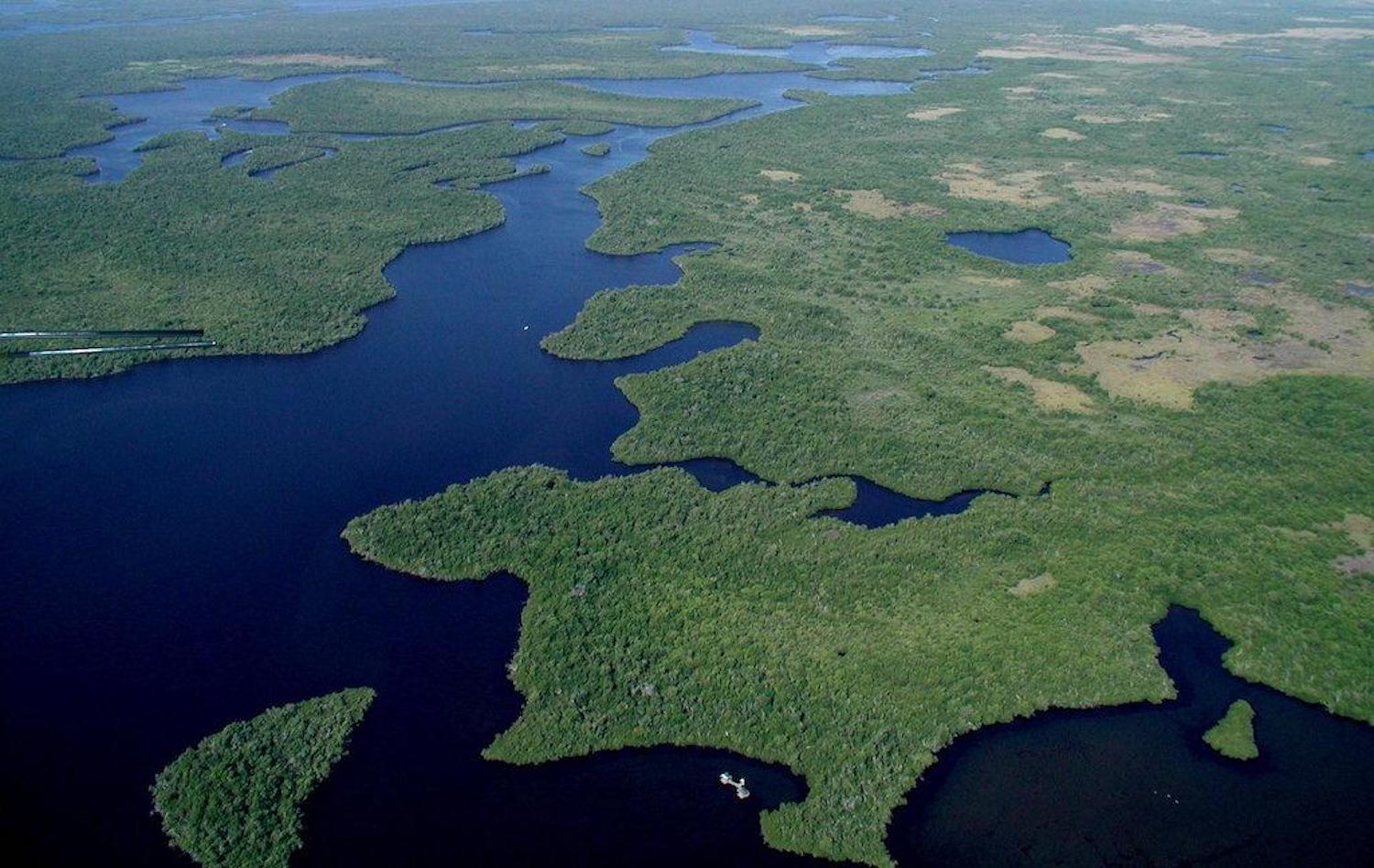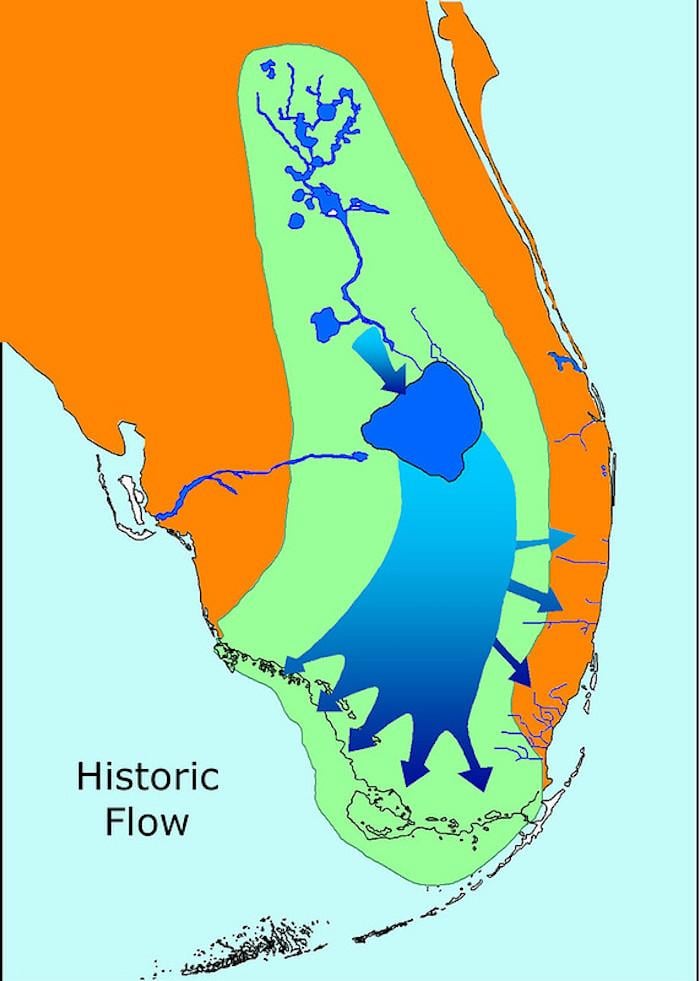Climate-Change Concerns Prompting New Review Of Comprehensive Everglades Restoration Program
By Craig Pittman
Twenty-three years ago, amid what seemed at the time to be the biggest election dispute ever, then-President Bill Clinton and Florida’s then-Gov. Jeb Bush met at the White House to sign a momentous environmental measure.
They were there to approve the Comprehensive Everglades Restoration Program, aka “CERP,” hailed as the largest environmental restoration project in the planet’s history.
“This is a great day!” Clinton boomed, according to Michael Grunwald’s book The Swamp: The Everglades, Florida, and the Politics of Paradise. “We should all be very proud.”
Now, with the work on CERP still far from complete, the people in charge are having second thoughts. They’re preparing an extensive review of the restoration plan to see what changes might be needed to accommodate a major factor that no one thought about back in 2000: Climate change.
"We’ve gotten to the point in Florida where we can’t avoid dealing with it,” said Eve Samples, executive director of the environmental group Friends of the Everglades.
However, the review can’t start just yet, according to Eva Vélez, chief of the Army Corps of Engineers’ Florida ecosystem branch.
“We have authorization, but we don’t yet have the funding,” she said.
The Water Resources Development Act of 2022, signed into law by President Joe Biden in December, authorized the review, she said. Among other things, the review by the Corps and its partners in the South Florida Water Management District is supposed to look at sea level rise, flooding risks, changes in rainfall and in drought periods and how development has altered land use, she said.
Without looking at those things, the CERP project may fall flat. Hence the need to launch this review, which if it can find funding will begin in 2026 and take an expected six to ten years to complete. CERP itself, originally projected to cost $7.8 billion and be completed by 2020, is now expected to be $16 billion and finish up in 2060.

The health of the Everglades depends on restoration of the "river of grass," but outside scientists are worried that climate-change impacts are not being taken into account by those working on restoration/NPS file
Seeking Historic Flows
The goal of CERP was to restore some semblance of the Everglades’ historic flow. For centuries, the “River of Grass” began as water rippled over the lip of Lake Okeechobee and slowly trickled through the gently sloping sawgrass landscape until it drained into the gin-clear depths of Florida Bay at the southern end of the state.
Between the 1940s and 1960s, the Corps of Engineers and the water management district ripped that natural system apart. They replaced it with 1,000 miles of levees and canals, 150 water-control structures, and 16 major pump stations.
The new system was set up to drain South Florida’s soggy landscape and make it dry enough for farming and development. It worked, and 9 million people jammed into the region.
But with the radical alteration to accommodate people, both the Everglades and Florida Bay suffered mightily, as did the wildlife there. Meanwhile the water supply grew scarce. Eventually the degradation prompted both state and federal officials to attempt to fix what they broke.
The Goal Of CERP
The 3,500-page CERP plan, drawn up over several years by the Corps and the water management agency, filled a stack of binders 4 feet high. Rather than simply tearing out all those structures, the CERP plan called for replacing them with a new set of structures to hold the water back and redirect it. Making it all work required the state and federal governments to work as equal partners, putting up an equal amount of money while completing a series of 68 projects.
The Corps official in charge at the time warned everyone, “Everglades restoration isn’t brain surgery. It’s more complicated.”

Decades of development and diversion have derailed historic flows of the "River of Grass"/NPS graphic
One of the provisions of the CERP plan called for a National Academy of Sciences' panel to review the work on a regular basis. In 2016, the panel first singled out a lack of attention to climate change as a looming problem. It repeated those concerns late last year.
"The one near certainty regarding Florida climate change is that temperature and sea level will continue to rise. Increases in sea level will alter the salinity and habitats in coastal and near coastal regions, and increases in air temperature will drive increases in evapotranspiration and decreases in runoff, unless compensatory changes in precipitation occur," reads an opening page of the 265-page 9th biennial review of Progress Towards Restoring the Everglades.
The Corps and the state water agency weren’t interested in the science panel’s early warnings. In fact, when the scientists brought up climate change again in 2018, the executive director of the state water agency at the time told them they should “tend to their knitting.”
Undeterred, the scientists continued bringing it up. In their most recent report, they noted that “inadequate consideration of water availability under future conditions and potential variations in the rate of sea-level rise could cause a project to move forward that is not viable under future climate change.”
Change Of Heart
Now, though, the state agency is on board with tackling climate change.
In April of this year, SFWMD’s resiliency officer, Carolina Maran, explained to the agency’s governing board that sea-level rise and increased flooding from heavy rains are already taking a toll on the operation of their Everglades drainage system. That means it’s even more important to see what those factors might mean for CERP.
For instance, canals that drain to the Atlantic Ocean are losing their ability to discharge water that way because sea level rise is pushing back, she told the board. But as the world warms up, rainfall is increasing, which puts a bigger strain on the system to protect the growing number of homes built on what used to be the historic Everglades.
In March, SFWMD and the Corps started a smaller, $19 million version of the climate change review, focused solely on the Palm Beach, Broward and Miami-Dade County portions of the map.
The two agencies are studying how to lessen flooding risks “resulting from the combination of rainfall runoff, storm surge, high tide and/or high-water table,” according to a Corps slide show presented in May to a joint meeting of those counties’ officials.
National Park Service officials couldn't immediately comment on how the new review might impact the park's ecosystem.
The irony of the new review is that this push is coming while Florida’s governor is Ron DeSantis, who in a recent Fox News interview connected to his presidential run derided climate change concerns as “the politicization of weather.”
As far back as the 2018 election, he was telling reporters, “I am not a global warming person. I do not want that label on me.”



Comments
Sea Level Rise will drown the Everglades within my grandchildren's lifetimes and your present course of action cannot change that. Good luck.
The reason Florida doesn't recognize Climate Change is because we have had a string of Govenors, starting with Rick Scott and now Ron DeSantis that don't believe in Climate Change. Then Govenor Scott wouldn't even let anyone who worked for the state use the words Climate Change in any document or speech. It's unfortunate that homeowners who can't afford to move elsewhere will be the most impacted by the reality of Climate Change. One more example of law makers ignoring the "little guy".